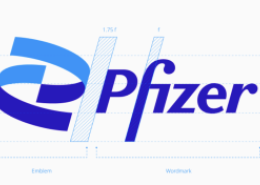Merck and Pfizer Announce Two Pivotal Phase 3 Studies for Ertugliflozin, an Investigational SGLT-2 Inhibitor, Met Primary Endpoints, Showing Significant A1C Reductions in Patients with Type 2 Diabetes
Ongoing CV Outcomes Trial of Ertugliflozin Expanded to Test for Superiority in CV Risk Reduction
Merck (NYSE:MRK), known as MSD outside the United States and Canada, in partnership with Pfizer Inc. (NYSE:PFE), today announced that two Phase 3 studies (VERTIS Mono and VERTIS Factorial) of ertugliflozin, an investigational oral SGLT-2 inhibitor for the treatment of patients with type 2 diabetes, met their primary endpoints. The study results showed statistically significant reductions in A1C (a measure of average blood glucose) for both ertugliflozin doses tested (5 mg and 15 mg daily). These results from the VERTIS clinical development program of ertugliflozin will be presented for the first time at the 76th Scientific Sessions of the American Diabetes Association, which are being held in New Orleans from June 10-14, 2016.
A 26-week investigational study (VERTIS Mono), which evaluated ertugliflozin as monotherapy, met its primary endpoint, showing that patients randomized to ertugliflozin 5 mg and 15 mg had significantly greater A1C reductions of 0.99 percent and 1.16 percent, respectively, compared with placebo (p<0.001, for both comparisons). In addition, significantly more patients taking ertugliflozin 5 mg and 15 mg achieved the A1C treatment goal of less than 7.0 percent (28.2 percent and 35.8 percent, respectively) compared with placebo (13.1 percent) (p<0.001, for both comparisons), which was a secondary endpoint of the study.
VERTIS Factorial, another 26-week investigational study, evaluated the co-administration of ertugliflozin and Merck’s DPP-4 inhibitor JANUVIA® (sitagliptin). This study also met its primary endpoint, with greater reductions in A1C observed in patients taking ertugliflozin in combination with sitagliptin compared to ertugliflozin or sitagliptin alone. An A1C reduction of 1.5 percent was observed in both combinations studied (ertugliflozin 5 mg or 15 mg with sitagliptin 100 mg), as compared with A1C reductions of 1.0 percent with ertugliflozin 5 mg alone, 1.1 percent with ertugliflozin 15 mg alone, and 1.1 percent with sitagliptin 100 mg alone (p<0.001 for both combinations vs. individual treatments).
In addition, the co-administration of ertugliflozin and sitagliptin was significantly more effective than ertugliflozin or sitagliptin alone in achieving the A1C treatment goal of less than 7.0 percent, which was a secondary endpoint of the study. Specifically, 52.3 percent of patients taking ertugliflozin 5 mg in combination with sitagliptin 100 mg and 49.2 percent of patients taking ertugliflozin 15 mg in combination with sitagliptin 100 mg reached an A1C goal of less than 7.0 percent. In comparison, 26.4 percent achieved this A1C goal with ertugliflozin 5 mg, 31.9 percent with ertugliflozin 15 mg, and 32.8 percent with sitagliptin 100 mg (p<0.001 for both combinations vs. individual treatments in model-based tests).
Indications and Usage for JANUVIA® (sitagliptin) 25 mg, 50 mg and 100 mg tablets
JANUVIA is indicated as an adjunct to diet and exercise to improve glycemic control in adults with type 2 diabetes mellitus. JANUVIA should not be used in patients with type 1 diabetes or for the treatment of diabetic ketoacidosis. JANUVIA has not been studied in patients with a history of pancreatitis. It is unknown whether patients with a history of pancreatitis are at increased risk of developing pancreatitis while taking JANUVIA.
Selected Important Risk Information about JANUVIA®
JANUVIA is contraindicated in patients with a history of a serious hypersensitivity reaction to sitagliptin, such as anaphylaxis or angioedema.
Update on VERTIS Clinical Development Program
VERTIS CV, a randomized, double-blind, placebo-controlled, parallel-group trial, was recently expanded to enable testing for superiority in improving CV outcomes in type 2 diabetes patients. The study is now targeting enrollment of approximately 8,000 patients with type 2 diabetes and established vascular disease. Pre-specified secondary endpoints were added to test for superiority on the composite of CV death and hospitalization for heart failure and superiority on CV death alone. The primary endpoint of the trial continues to be to assess the non-inferiority of ertugliflozin versus placebo on the composite of CV death, nonfatal myocardial infarction or nonfatal stroke (MACE).
“Merck’s goal in our diabetes development program is to evaluate new treatment options to advance the care of people with type 2 diabetes around the world,” said Peter Stein, M.D., vice president, late stage development, diabetes and endocrinology, Merck. “We are encouraged that these first Phase 3 studies of investigational ertugliflozin met their primary endpoints for ertugliflozin as a monotherapy and in combination with sitagliptin, and we look forward to progressing the VERTIS clinical development program with Pfizer.”
“Pfizer has a legacy in CV disease, and after discovering ertugliflozin, wanted a partner that could help us meet our goal to improve disease management in patients with type 2 diabetes,” said James Rusnak, M.D., Ph.D., chief development officer, cardiovascular & metabolics, Pfizer Global Product Development. “Diabetes is a progressive disease, and many patients need multiple treatment options to manage their condition.”
Merck and Pfizer plan to submit New Drug Applications to the U.S. Food and Drug Administration for ertugliflozin and the two fixed-dose combination tablets (ertugliflozin plus JANUVIA, and ertugliflozin plus metformin) by the end of 2016. VERTIS Mono and VERTIS Factorial are a part of the VERTIS clinical development program comprised of a total of nine Phase 3 trials in approximately 12,600 adults with type 2 diabetes. Results from the other seven VERTIS trials will be submitted for publication and presentation at future scientific congresses.
Results from VERTIS Mono: Ertugliflozin as a Monotherapy (130-LB)
In this randomized, double-blind, placebo-controlled investigational study, 461 patients with type 2 diabetes and a baseline A1C of 7.0 – 10.5 percent, inclusive, who were inadequately controlled on diet and exercise alone and who had an eGFR (estimated glomerular filtration rate) of ≥55 mL/min/1.73m2, were randomized to receive ertugliflozin 5 mg, ertugliflozin 15 mg, or placebo in a 1:1:1 ratio. In addition to meeting the primary endpoint of improved blood glucose control at 26 weeks and the secondary endpoint of achieving an A1C treatment goal of less than 7.0 percent, the following observations were made on additional secondary endpoints:
- Placebo-adjusted mean significant reduction in body weight of 3.9 lbs (1.76 kg) (5 mg) and 4.8 lbs (2.16 kg) (15 mg) (p<0.001, for both comparisons);
- Placebo-adjusted mean significant reductions in fasting plasma glucose (FPG) of 34.50 mg/dL (5 mg) and 44.01 mg/dL (15 mg) (p<0.001, for both comparisons);
- Placebo-adjusted mean significant reductions in postprandial glucose (PPG) of 69.03 md/dL (5 mg) and 67.33 mg/dL (15 mg) (p<0.001, for both comparisons); and
- Numerically greater reductions in systolic blood pressure (3.31 mmHg (5 mg), 1.71 mmHg (15 mg)) and diastolic blood pressure (1.80 mmHg (5 mg), 0.37 mmHg (15 mg)), which did not reach statistical significance, for both comparisons.
Overall adverse event (AE) rates were similar between ertugliflozin 5 mg (52.6 percent), ertugliflozin 15 mg (55.9 percent) and placebo (52.3 percent), with a similar rate of one or more serious AEs across all groups (4.5 percent for ertugliflozin 5 mg; 1.3 percent for ertugliflozin 15 mg; 1.3 percent for placebo). The rates of discontinuations due to AEs were low across all groups (2.6 percent for ertugliflozin 5 mg; 2.0 percent for ertugliflozin 15 mg; 3.3 percent for placebo). A higher incidence of genital mycotic infections in females was observed in patients taking ertugliflozin 15 mg (22.6 percent) and ertugliflozin 5 mg (16.4 percent) compared with placebo (5.6 percent). There was no increase in the incidence of urinary tract infections with either dose of ertugliflozin relative to placebo.
Results from VERTIS Factorial: Ertugliflozin When Combined with JANUVIA (Sitagliptin) (125-LB)
In the randomized, double-blind investigational study, 1,233 patients with type 2 diabetes with a baseline A1C of 7.5 – 11.0 percent who were inadequately controlled on metformin alone (≥1500 mg/day) and who had an eGFR (estimated glomerular filtration rate) of ≥60 mL/min/1.73m2, were randomized to one of five treatment groups in a 1:1:1:1:1 ratio: co-administration of ertugliflozin 5 mg with sitagliptin 100 mg; co-administration of ertugliflozin 15 mg with sitagliptin 100 mg; ertugliflozin 5 mg; ertugliflozin 15 mg; or sitagliptin 100 mg.
In addition to meeting the primary endpoint of improved blood glucose control at 26 weeks and the secondary endpoint of achieving an A1C treatment goal of less than 7.0 percent, the study also showed that the co-administration of ertugliflozin and sitagliptin was significantly more effective than ertugliflozin or sitagliptin alone in reducing FPG, and significantly more effective in reducing body weight and systolic blood pressure compared to sitagliptin alone, which were secondary endpoints. The following results on these secondary endpoints were observed:
- Patients taking ertugliflozin 5 mg and sitagliptin 100 mg experienced a reduction in FPG of 44.0 mg/dL (p≤0.004 vs. ertugliflozin 5 mg and p<0.001 vs. sitagliptin); 48.7 mg/dL with ertugliflozin 15 mg and sitagliptin 100 mg (p<0.001 vs. each individual treatment); 35.7 mg/dL with ertugliflozin 5 mg; 36.9 mg/dL with ertugliflozin 15 mg; and 25.6 mg/dL with sitagliptin 100 mg.
- The co-administration of ertugliflozin 5 mg and sitagliptin 100 mg resulted in a reduction in body weight of 5.5 lbs (2.5 kg); 6.4 lbs (2.9 kg) with ertugliflozin 15 mg and sitagliptin 100 mg; and 1.5 lbs (0.7 kg) with sitagliptin 100 mg (p<0.001 for both combinations vs. sitagliptin). Patients taking ertugliflozin alone, 5 or 15 mg, also experienced a reduction in body weight of 5.9 lbs (2.7 kg) and 8.1 lbs (3.7 kg), respectively.
- Patients taking ertugliflozin 5 mg and sitagliptin 100 mg also experienced a reduction in systolic blood pressure of 3.4 mmHg (p=0.005 vs. sitagliptin); 3.7 mmHg with ertugliflozin 15 mg and sitagliptin 100 mg (p=0.002 vs. sitagliptin); and 0.7 mmHg with sitagliptin 100 mg. Patients taking ertugliflozin 5 or 15 mg alone also experienced a reduction in systolic blood pressure of 3.9 and 3.7 mmHg, respectively.
The incidence of AEs was similar across all therapeutic groups in the study (51.2 percent for ertugliflozin 5 mg; 43.1 percent for ertugliflozin 15 mg; 41.7 percent for sitagliptin 100 mg; 45.7 percent for ertugliflozin 5 mg plus sitagliptin 100 mg; 46.7 percent for ertugliflozin 15 mg plus sitagliptin 100 mg). The rates of serious AEs were similar across all groups (3.2 percent for ertugliflozin 5 mg; 1.2 percent for ertugliflozin 15 mg; 1.6 percent for sitagliptin 100 mg; 2.5 percent for ertugliflozin 5 mg plus sitagliptin 100 mg; 1.6 percent for ertugliflozin 15 mg plus sitagliptin 100 mg). The rates of discontinuations due to AEs were similar across the five treatment arms (2.4 percent for ertugliflozin 5 mg; 1.2 percent for ertugliflozin 15 mg; 0.4 percent for sitagliptin 100 mg; 1.2 percent for ertugliflozin 5 mg plus sitagliptin 100 mg; 2.9 percent for ertugliflozin 15 mg plus sitagliptin 100 mg).
The incidence of genital mycotic infections was higher in patients receiving ertugliflozin compared to sitagliptin alone (females, 4.9-7.6 percent vs. 1.1 percent, and males, 2.4-4.7 percent vs. 0 percent).
Selected Important Risk Information about JANUVIA® continued
There have been postmarketing reports of acute pancreatitis, including fatal and nonfatal hemorrhagic or necrotizing pancreatitis, in patients taking JANUVIA. After initiating JANUVIA, observe patients carefully for signs and symptoms of pancreatitis. If pancreatitis is suspected, promptly discontinue JANUVIA and initiate appropriate management. It is unknown whether patients with a history of pancreatitis are at increased risk of developing pancreatitis while taking JANUVIA.
Assessment of renal function is recommended prior to initiating JANUVIA and periodically thereafter. A dosage adjustment is recommended in patients with moderate or severe renal insufficiency and in patients with end-stage renal disease requiring hemodialysis or peritoneal dialysis. Caution should be used to ensure that the correct dose of JANUVIA is prescribed.
There have been postmarketing reports of worsening renal function, including acute renal failure, sometimes requiring dialysis. A subset of these reports involved patients with renal insufficiency, some of whom were prescribed inappropriate doses of sitagliptin.
When JANUVIA was used in combination with a sulfonylurea or insulin, medications known to cause hypoglycemia, the incidence of hypoglycemia was increased over that of placebo. Therefore, a lower dose of sulfonylurea or insulin may be required to reduce the risk of hypoglycemia.
The incidence (and rate) of hypoglycemia based on all reports of symptomatic hypoglycemia were: 12.2% (0.59 episodes/patient-year) for JANUVIA 100 mg in combination with glimepiride (with or without metformin), 1.8% (0.24 episodes/patient-year) for placebo in combination with glimepiride (with or without metformin), 15.5% (1.06 episodes/patient-year) for JANUVIA 100 mg in combination with insulin (with or without metformin), and 7.8% (0.51 episodes/patient-year) for placebo in combination with insulin (with or without metformin).
There have been postmarketing reports of serious hypersensitivity reactions in patients treated with JANUVIA, such as anaphylaxis, angioedema, and exfoliative skin conditions including Stevens-Johnson syndrome. Onset of these reactions occurred within the first 3 months after initiation of treatment with JANUVIA, with some reports occurring after the first dose. If a hypersensitivity reaction is suspected, discontinue JANUVIA, assess for other potential causes for the event, and institute alternative treatment for diabetes.
Angioedema has also been reported with other dipeptidyl peptidase-4 (DPP-4) inhibitors. Use caution in a patient with a history of angioedema with another DPP-4 inhibitor because it is unknown whether such patients will be predisposed to angioedema with JANUVIA®.
There have been postmarketing reports of severe and disabling arthralgia in patients taking DPP-4 inhibitors. The time to onset of symptoms following initiation of drug therapy varied from 1 day to years. Patients experienced relief of symptoms upon discontinuation of the medication. A subset of patients experienced a recurrence of symptoms when restarting the same drug or a different DPP-4 inhibitor. Consider DPP-4 inhibitors as a possible cause for severe joint pain and discontinue drug if appropriate.
There have been no clinical studies establishing conclusive evidence of macrovascular risk reduction with JANUVIA or with any other antidiabetic drug.
In clinical studies, the adverse reactions reported, regardless of investigator assessment of causality, in ≥5% of patients treated with JANUVIA as monotherapy and in combination therapy and more commonly than in patients treated with placebo, were upper respiratory tract infection, nasopharyngitis, and headache.
About Merck
For 125 years, Merck has been a global health care leader working to help the world be well. Merck is known as MSD outside the United States and Canada. Through our prescription medicines, vaccines, biologic therapies, and animal health products, we work with customers and operate in more than 140 countries to deliver innovative health solutions. We also demonstrate our commitment to increasing access to health care through far-reaching policies, programs and partnerships. For more information, visit www.merck.com and connect with us on Twitter, Facebook, YouTube and LinkedIn.
About Pfizer Inc.
At Pfizer, we apply science and our global resources to bring therapies to people that extend and significantly improve their lives. We strive to set the standard for quality, safety and value in the discovery, development and manufacture of healthcare products. Our global portfolio includes medicines and vaccines as well as many of the world’s best-known consumer health care products. Every day, Pfizer colleagues work across developed and emerging markets to advance wellness, prevention, treatments and cures that challenge the most feared diseases of our time. Consistent with our responsibility as one of the world’s premier innovative biopharmaceutical companies, we collaborate with health care providers, governments and local communities to support and expand access to reliable, affordable health care around the world. For more than 150 years, Pfizer has worked to make a difference for all who rely on us. For more information, please visit us at www.pfizer.com. In addition, to learn more, follow us on Twitter @Pfizer and @Pfizer_News, LinkedIn , YouTube and like us on Facebook at Facebook.com/Pfizer.
Forward-Looking Statement of Merck & Co., Inc., Kenilworth, N.J., USA
This news release of Merck & Co., Inc., Kenilworth, N.J., USA (the “company”) includes “forward-looking statements” within the meaning of the safe harbor provisions of the U.S. Private Securities Litigation Reform Act of 1995. These statements are based upon the current beliefs and expectations of the company’s management and are subject to significant risks and uncertainties. There can be no guarantees with respect to pipeline products that the products will receive the necessary regulatory approvals or that they will prove to be commercially successful. If underlying assumptions prove inaccurate or risks or uncertainties materialize, actual results may differ materially from those set forth in the forward-looking statements.
Risks and uncertainties include but are not limited to, general industry conditions and competition; general economic factors, including interest rate and currency exchange rate fluctuations; the impact of pharmaceutical industry regulation and health care legislation in the United States and internationally; global trends toward health care cost containment; technological advances, new products and patents attained by competitors; challenges inherent in new product development, including obtaining regulatory approval; the company’s ability to accurately predict future market conditions; manufacturing difficulties or delays; financial instability of international economies and sovereign risk; dependence on the effectiveness of the company’s patents and other protections for innovative products; and the exposure to litigation, including patent litigation, and/or regulatory actions.
The company undertakes no obligation to publicly update any forward-looking statement, whether as a result of new information, future events or otherwise. Additional factors that could cause results to differ materially from those described in the forward-looking statements can be found in the company’s 2015 Annual Report on Form 10-K and the company’s other filings with the Securities and Exchange Commission (SEC) available at the SEC’s Internet site (www.sec.gov).
Pfizer Disclosure Notice
The information contained in this release is as of June 11, 2016. Pfizer assumes no obligation to update forward-looking statements contained in this release as the result of new information or future events or developments.
This release contains forward-looking information about a product candidate, ertugliflozin, including its potential benefits, that involves substantial risks and uncertainties that could cause actual results to differ materially from those expressed or implied by such statements. Risks and uncertainties include, among other things, the uncertainties inherent in research and development, including the ability to meet anticipated trial commencement and completion dates and regulatory submission dates, as well as the possibility of unfavorable clinical trial results, including unfavorable new clinical data and additional analyses of existing clinical data; whether and when any applications for ertugliflozin may be filed with regulatory authorities in any jurisdictions; whether and when regulatory authorities in any jurisdictions may approve such applications, which will depend on the assessment by such regulatory authorities of the benefit-risk profile suggested by the totality of the efficacy and safety information submitted; decisions by regulatory authorities regarding labeling and other matters that could affect the availability or commercial potential of ertugliflozin; and competitive developments. The competitive landscape for type 2 diabetes therapies, including SGLT 2-inhibitors, continues to evolve. The success of our ertugliflozin program is dependent on developments in that space.
A further description of risks and uncertainties can be found in Pfizer’s Annual Report on Form 10-K for the fiscal year ended December 31, 2015 and in its subsequent reports on Form 10-Q, including in the sections thereof captioned “Risk Factors” and “Forward-Looking Information and Factors That May Affect Future Results”, as well as in its subsequent reports on Form 8-K, all of which are filed with the U.S. Securities and Exchange Commission and available at www.sec.gov(link is external) and www.pfizer.com.
# # #
Please see Prescribing Information for JANUVIA® (sitagliptin) at http://www.merck.com/product/usa/pi_circulars/j/januvia/januvia_pi.pdf and Medication Guide for JANUVIA at http://www.merck.com/product/usa/pi_circulars/j/januvia/januvia_mg.pdf.
Merck Media Contacts:
Doris Li, 908-246-5701
or
Kristen Drake, 908-334-4688
or
Merck Investor Contact:
Justin Holko, 908-740-1879
or
Pfizer Media Contact:
Steve Danehy, 212-733-1538
or
Pfizer Investor Contact:
Ryan Crowe, 212-733-8160








